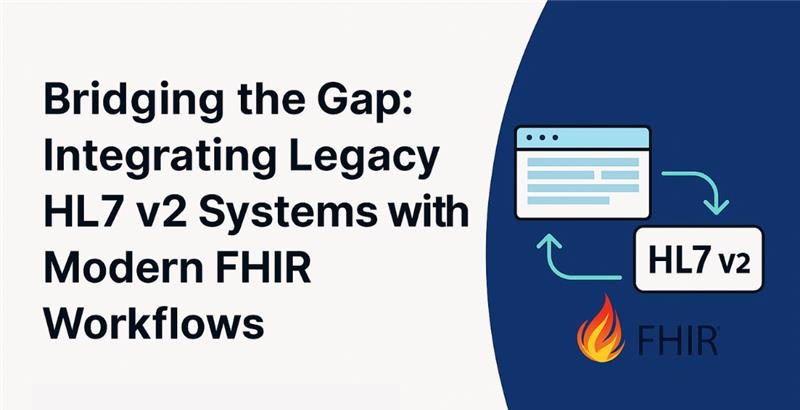Bridging the Gap: Integrating Legacy HL7 Systems with Modern FHIR Workflows
Bridging the Gap: Integrating Legacy HL7 Systems with Modern FHIR Workflows

eTransX HEMI: The Ultimate Solution for HL7 Integration Management
Key Takeaways
- HL7 is the global standard for exchanging healthcare data.
- HL7 v2 is still common in legacy systems, while FHIR is the future of healthcare APIs.
- The HEMI HL7 Interface Engine by eTransX makes it easy to connect old and new systems.
- HEMI is secure, scalable, and fast — with low-code and no-code interface engine tools for quicker deployments.
What Is HL7 Interface Engine Software?
An HL7 interface engine acts like a translator between healthcare systems. Most hospitals use several systems — like EHRs, billing tools, and lab databases — that all need to share data, but don’t all speak the same “language.” That’s where an engine like HEMI from eTransX comes in.
HEMI ensures messages — like patient admission or lab results — move between systems securely and correctly. It handles HL7 v2, v3, CDA, and modern FHIR formats all in one platform.
Why Use HL7 Integration Engine Software?
- Standardizes data formats across legacy and modern platforms
- Supports rapid decision-making by delivering clean, real-time data
- Reduces manual effort with automation and intelligent routing
- Enhances patient care by making systems work together better
- Protects sensitive data with HIPAA-ready security protocols
How HEMI from eTransX Bridges Legacy HL7 and Modern FHIR Workflows
Healthcare teams often use older systems with HL7 v2 while implementing new tech like patient apps or remote monitoring tools requiring FHIR. HEMI is the bridge:
- No/Low-code, drag-and-drop HL7 mapper
- Supports HL7 v2, v3, and FHIR — no need to rip and replace
- Real-time transformation between HL7 formats and FHIR JSON
- Scalable for clinics to large networks
- Available in cloud or on-prem deployment
HEMI simplifies integration and reduces go-live time significantly.
HL7 Integration: What is It, Use Cases & Main Benefits
What is HL7 in healthcare?
HL7 stands for Health Level Seven, a set of international standards that help healthcare applications talk to each other.
Benefits of HL7 Integration:
- Data uniformity across infrastructure
- Real-time, structured data for faster decisions
- Standardized exchange with external sources
- Enhanced quality of patient care
HL7 Integration via APIs
The future of healthcare data exchange is API-driven. HEMI supports:
- Secure, standards-based FHIR APIs
- Custom API connectors
- Data transformation between HL7 v2, FHIR, and others
This lets providers modernize without abandoning legacy systems.
HL7 Integration Use Cases
- EHR management: Automates patient intake from referring hospitals.
- Hospital-to-hospital data exchange: Even across different systems.
- Regulatory submissions: Easily send standardized HL7/FHIR messages to agencies.
- Shift management: Integrates with scheduling tools using real-time patient data.
- Patient services: Sync EHRs with mobile apps and appointment portals.
FAQs about HL7 Integration Engine
What does HL7 stand for?
Health Level Seven – a standard for healthcare data exchange.
Difference between API and HL7?
HL7 is a data standard, while APIs are the delivery method. HL7 FHIR is designed for API-based exchange.
Advantages of HL7:
- Reliable data sharing
- Better patient care
- Easier integration
- Faster workflows
Additional Use Cases
Healthcare Mobile App Development (2025)
Use HEMI with FHIR and APIs to connect apps directly to EMRs and EHRs.
E-Pharmacy Integration
HEMI connects pharmacy systems with EHRs and portals for efficient prescription handling.
Final Thought
The future of healthcare is connected — but many hospitals still rely on isolated legacy systems. The HEMI HL7 Interface Engine by eTransX bridges that gap securely and cost-effectively. Whether you’re a small clinic or a regional network, HEMI streamlines data exchange and improves care delivery.
Want to see HEMI in action? Book a free demo with the eTransX team today and explore how smart integration can transform your organization.
